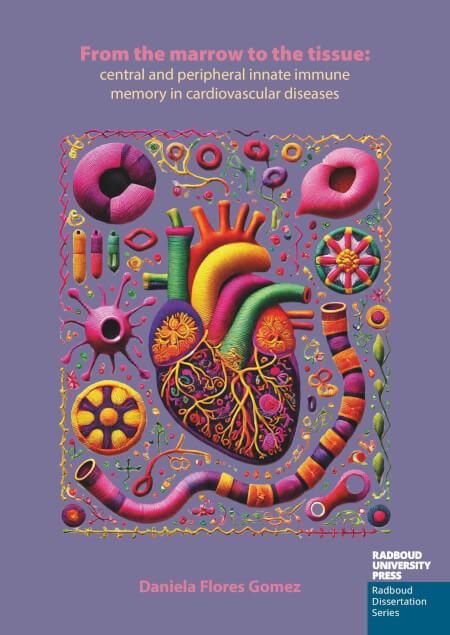From the marrow to the tissue: central and peripheral innate immune memory in cardiovascular diseases
Keywords:
Innate immunity, Monocytes, Macrophages, Trained immunity, Bone marrow, Hematopoietic stem cellsSynopsis
Cardiovascular diseases (CVDs) remain the leading cause of global morbidity and mortality, primarily driven by conditions such as atherosclerotic CVD (ASCVD) and calcific aortic valve disease (CAVD). Both conditions share chronic inflammation as a key pathological feature. ASCVD involves plaque formation due to lipid accumulation and immune cell activity, leading to arterial occlusion and potential cardiovascular events. Meanwhile, CAVD causes valve narrowing, often needing surgical intervention in advanced stages. Traditional treatments target risk factors like hypertension and hyperlipidemia; however, inflammation-targeted therapies have shown promise for ASCVD, with limited progress for CAVD. This thesis investigates the role of trained immunity—a memory-like response in innate immune cells—in ASCVD pathogenesis. Chapter 3 explores how leptin induces trained immunity in monocytes, correlating with increased inflammatory markers. Chapter 4 reveals that brief IL-1β exposure reprograms human hematopoietic stem cells, enhancing monocyte inflammatory responses. A comparative analysis in Chapter 5 underscores functional differences among monocyte models, guiding disease research methodologies. Chapter 6 evaluates neutrophil contributions to CAVD, finding altered phenotypes and increased oxidative activity, potentially influencing disease progression. Altogether, these findings highlight the interplay of immune reprogramming and inflammation in CVDs, emphasizing the need for targeted therapeutic strategies to address residual risks and disease-specific mechanisms.

Published
Series
Categories
License

This work is licensed under a Creative Commons Attribution-NonCommercial-NoDerivatives 4.0 International License.

